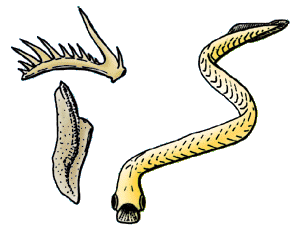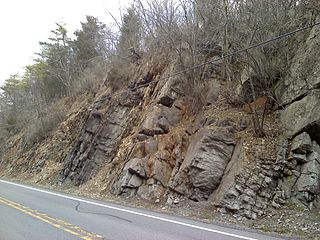| Ancyrodella Temporal range: Late Devonian | |
|---|---|
| Scientific classification | |
| Kingdom: | Animalia |
| Phylum: | Chordata |
| Class: | †Conodonta |
| Genus: | †Ancyrodella Ulrich & Bassler, 1926 [1] |
| Species | |
| |
Ancyrodella is an extinct genus of conodonts from the Late Devonian.

Conodonts are extinct agnathan chordates resembling eels, classified in the class Conodonta. For many years, they were known only from tooth-like microfossils found in isolation and now called conodont elements. Knowledge about soft tissues remains limited. The animals are also called Conodontophora to avoid ambiguity.
During the Famennian stage of the Late Devonian, a biologic event occurred (Upper Kellwasser Extinction of all Ancyrodella and Ozarkodina and most Palmatolepis , Polygnathus and Ancyrognathus ).
The Famennian is the latter of two faunal stages in the Late Devonian epoch. It lasted from 372.2 million years ago to 358.9 million years ago. It was preceded by the Frasnian stage and followed by the Tournaisian stage.

The Late Devonian extinction was one of five major extinction events in the history of life on Earth. A major extinction, the Kellwasser event, occurred at the boundary that marks the beginning of the last phase of the Devonian period, the Famennian faunal stage, about 376–360 million years ago. Overall, 19% of all families and 50% of all genera became extinct. A second, distinct mass extinction, the Hangenberg event, closed the Devonian period.
Ozarkodina is an extinct genus of conodonts in the family Spathognathodontidae.




